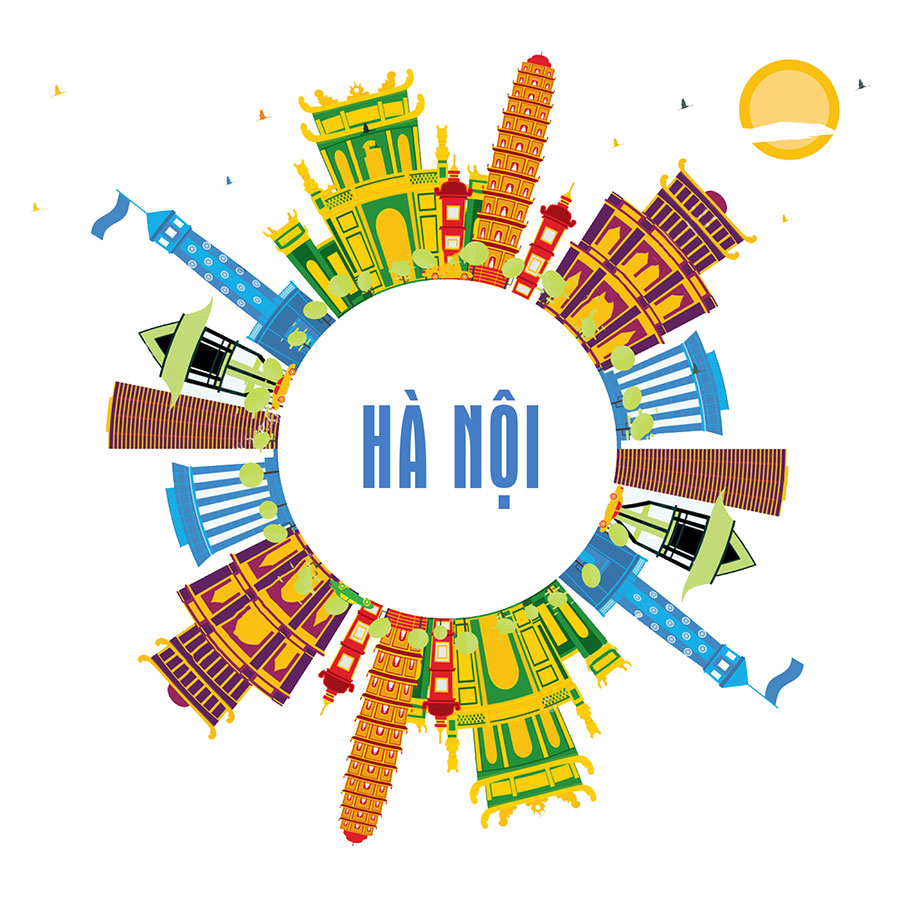Situated on the banks of the Rau Ram canal about eight kilometers from Ninh Kieu District in Can Tho City, lo hu tieu Sau Hoai (Sau Hoai's rice noodle factory) has recently been added to the itineraries of many tourists.
Almost every day, between 5:30 a.m. and 8 a.m. groups of foreign backpackers arrive at the factory on vo lai (wooden boats operated with motors). They are soon followed by other groups who arrive on boats operated by tourist companies. It was estimated that hundreds of tourists visit the factory every day to learn about the technique of making hu tieu (rice noodles), eat several noodle dishes, visit fruit gardens, and buy handicraft items. Most of foreign tourists come here right after visiting the famous Cai Rang floating market.
At the 5,000-square-meter factory, they visit a workshop where they can watch all the stages in making the noodles from washing, soaking, and husking rice to making thin sheets with starch, drying the sheets and cutting them into strips.
Huynh Ngoc Diep, Hoai's second son, who can speak English, French, and German, acts as a tour guide explaining all the processes to tourists.
The rice noodle produced by Hoai is the nationally famous hu tieu bot loc (tapioca rice noodles) which is chewy and transparent, compared to common hu tieu used in hu tieu Nam Vang (Phnom Penh rice noodle soup) and Chinese noodle soup dishes. Situated on the banks of the Rau Ram canal about eight kilometers from Ninh Kieu District in Can Tho City, lo hu tieu Sau Hoai (Sau Hoai's rice noodle factory) has recently been added to the itineraries of many tourists.
Almost every day, between 5:30 a.m. and 8 a.m. groups of foreign backpackers arrive at the factory on vo lai (wooden boats operated with motors). They are soon followed by other groups who arrive on boats operated by tourist companies.
Vietnamese tourists, meanwhile, usually come around noon on motorbikes or boats.
It was estimated that hundreds of tourists visit the factory every day to learn about the technique of making hu tieu (rice noodles), eat several noodle dishes, visit fruit gardens, and buy handicraft items.
Most of foreign tourists come here right after visiting the famous Cai Rang floating market.
At the 5,000-square-meter factory, they visit a workshop where they can watch all the stages in making the noodles from washing, soaking, and husking rice to making thin sheets with starch, drying the sheets and cutting them into strips.
Huynh Ngoc Diep, Hoai's second son, who can speak English, French, and German, acts as a tour guide explaining all the processes to tourists.
The rice noodle produced by Hoai is the nationally famous hu tieu bot loc (tapioca rice noodles) which is chewy and transparent, compared to common hu tieu used in hu tieu Nam Vang (Phnom Penh rice noodle soup) and Chinese noodle soup dishes.
About two months ago, Hoai launched a home-stay service with six rooms, and plans to build another 14 rooms in the near future. He said while he mainly collaborates with local travel companies, many tourists come after being recommended by their friends or some tour guide websites. Foreign tourists, including American, Chinese, French, Japanese, and Korean, usually visit between July and April, while Vietnamese typically visit during the summer, he said.
During the peak season, they receive 300-400 guests a day, and this goes down to several dozens during the off season.
Hoai said that he does not set a fixed entrance fee, but places a box at the eatery so tourists can donate whatever they think his services deserve.
Thanh Nien News














